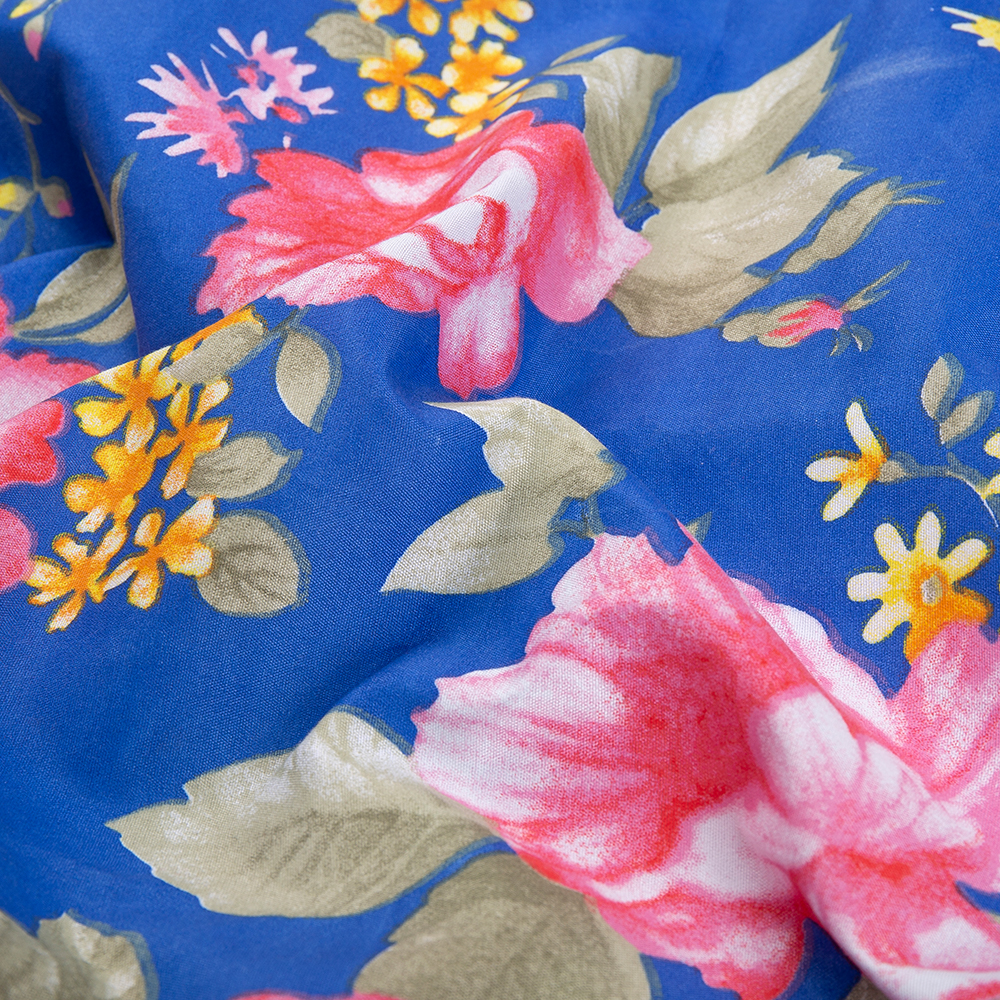
PR Microfiber Fabric is a revolutionary textile material known for its exceptional softness, strength, and versatility. It has become increasingly popular in various industries, including fashion, home textiles, cleaning products, and sportswear.
Microfiber refers to a synthetic fiber that is finer than one denier, which is approximately one-fifth the diameter of a human hair. PR Microfiber Fabric is typically made from a combination of polyester and nylon, known for its ultra-fine fibers that provide superior softness and absorbency. The "PR" in its name may indicate a specific brand or treatment process used to enhance the fabric's performance characteristics, such as improved durability, breathability, or water resistance.
The production of PR Microfiber Fabric involves several stages:
The process starts with the spinning of ultra-fine synthetic fibers, such as polyester and nylon. These fibers are much finer than natural fibers like cotton or wool, giving microfiber its distinct properties.
The spun fibers are then woven or knitted into fabric. The type of weave or knit pattern affects the fabric's texture, stretch, and overall feel.
PR Microfiber Fabric may undergo various finishing processes to enhance its properties. This can include treatments for water resistance, stain repellence, or anti-static properties. These finishes improve the fabric's performance and make it suitable for specific applications.
The final step in manufacturing involves thorough quality checks to ensure the fabric meets desired standards, such as fiber density, thickness, and treatment effectiveness.
The ultra-fine fibers of PR Microfiber Fabric create a soft and smooth texture, making it comfortable to wear against the skin. This softness makes it a popular choice for clothing items like sportswear, loungewear, and undergarments, where comfort is essential.
PR Microfiber Fabric has an impressive ability to absorb moisture due to the dense network of tiny fibers, which significantly increases its surface area. This makes it ideal for use in cleaning cloths, towels, and sportswear, as it can absorb sweat and liquids quickly and dry faster than traditional materials.
Despite its dense fiber structure, PR Microfiber Fabric remains lightweight and breathable. The small gaps between fibers allow air to pass through, helping to keep the wearer cool and comfortable. This characteristic is especially valued in activewear and outdoor apparel.

PR Microfiber Fabric is known for its durability. The synthetic fibers resist wear and tear, making it suitable for items that experience frequent use, such as cleaning products, upholstery, and sports gear. It also holds up well against repeated washing without losing its shape or texture.
With appropriate finishing treatments, PR Microfiber Fabric can resist stains and repel water, making it practical for outdoor use and home textiles like upholstery and curtains. These finishes help to maintain the fabric's appearance and extend its lifespan.
In the fashion industry, PR Microfiber Fabric is widely used in activewear, leggings, and outerwear due to its comfort, breathability, and moisture-wicking properties. It is also popular in loungewear and intimates, offering a soft, lightweight feel that enhances the wearer's experience.
PR Microfiber Fabric is commonly used in home textile products such as bed linens, curtains, and upholstery. Its softness and durability make it an ideal choice for furniture covers and decorative pillows. Additionally, its stain-resistant and quick-drying properties make it suitable for use in bathroom textiles like towels and bath mats.
One of the most well-known applications of PR Microfiber Fabric is in cleaning products. The fine fibers are excellent at trapping dirt, dust, and liquids, making microfiber cloths and mops highly effective for cleaning surfaces. They can be used dry for dusting or wet for cleaning, providing versatility for household and professional cleaning tasks.
PR Microfiber Fabric is a popular choice for sports and outdoor gear, including workout clothes, running jackets, and backpacks. Its lightweight nature and moisture management capabilities make it perfect for performance wear. The fabric's ability to repel water and resist stains is an added benefit for outdoor activities where exposure to the elements is common.
In the automotive industry, PR Microfiber Fabric is used for car interiors, such as seat covers and headliners, due to its durability and easy maintenance. In industrial applications, microfiber cloths are employed for cleaning delicate equipment or surfaces where traditional cleaning materials may cause damage.
Although microfiber is a synthetic material, manufacturers are increasingly looking for ways to make the production process more sustainable. This includes using recycled polyester or developing biodegradable microfibers. PR Microfiber Fabric, with its long lifespan and reduced need for harsh cleaning chemicals, contributes to eco-friendly practices in the textile industry.
The comfort, versatility, and performance qualities of PR Microfiber Fabric have made it a staple in modern fashion. Activewear and athleisure trends have boosted the demand for microfiber fabrics that can perform well during physical activity while also being stylish for everyday wear.
The use of PR Microfiber Fabric in cleaning products has revolutionized cleaning methods. Its superior ability to pick up and hold dirt without requiring chemicals has made microfiber cloths and mops the preferred choice for eco-friendly cleaning solutions.
PR Microfiber Fabric is a versatile and high-performance textile that offers numerous advantages across various applications. From fashion and home textiles to cleaning products and industrial uses, its unique properties make it a sought-after material in many fields. As the textile industry continues to innovate and prioritize sustainability, PR Microfiber Fabric will likely play a crucial role in shaping future trends and practices. Its ability to combine comfort, durability, and environmental benefits makes it a valuable asset in modern textiles.